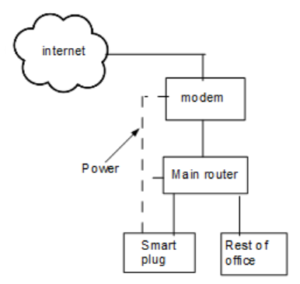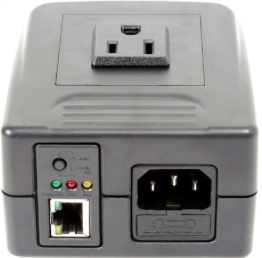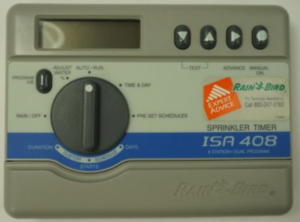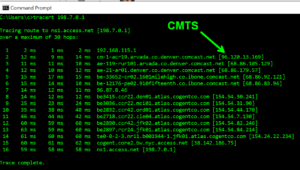 Everybody nowadays uses smart plugs. A smart plug is a thing that you plug into the wall and then you plug something (maybe a lamp) into it. The smart plug typically connects to your wifi and from there to the Internet. Using an app on your smart phone, or using Alexa, you can remotely send a signal to the plug to tell it to turn off the lamp. Later you can send another signal to the plug to tell it to turn the lamp back on. Smart plugs are a lot of fun and you can do lots of interesting things with them.
Everybody nowadays uses smart plugs. A smart plug is a thing that you plug into the wall and then you plug something (maybe a lamp) into it. The smart plug typically connects to your wifi and from there to the Internet. Using an app on your smart phone, or using Alexa, you can remotely send a signal to the plug to tell it to turn off the lamp. Later you can send another signal to the plug to tell it to turn the lamp back on. Smart plugs are a lot of fun and you can do lots of interesting things with them.
Now let’s talk about the cable or DSL modem that connects your office to the Internet (see figure at right). There is a main router the WAN port of which connects to that modem, and the LAN ports of which connect (directly or indirectly through ethernet switches) to all of the devices in your office. Although one hopes that it does not happen very often, the real-life situation is that every now and then one feels the need to power-cycle the main router and modem.
Suppose you were to use one of the smart plugs of the kind that I just described, as a way to control the electrical power (shown by dashed lines in the figure) to the main router and modem. It turns out this would be a really unwise thing to do. Do you see why?
Think about it. Suppose you were to use the app on your smart phone to send a signal to the smart plug, telling it to turn off the main router and modem.
Yeah.
The situation at this point would be that you would never be able to send a signal to the smart plug, telling it to turn on the main router and modem. The reason being that the main router and modem are off. Meaning that the smart plug does not have any connection to the Internet.
Meaning that if you had sent the “power off” command from some remote location, then to get things turned on again, you would have to travel in a car or airplane or train to the office location to turn things back on.
Yeah.
 So this explains why if you know what to search for, you can find a very specialized kind of smart plug, a smart plug where you can send a single command that tells the smart plug to turn off the controlled devices and then turn them back on. My favorite smart plug in this category is the EZOutlet2, shown at right.
So this explains why if you know what to search for, you can find a very specialized kind of smart plug, a smart plug where you can send a single command that tells the smart plug to turn off the controlled devices and then turn them back on. My favorite smart plug in this category is the EZOutlet2, shown at right.
This smart plug connects to your network with a wired ethernet cable, not wifi. And you can send it any of three commands — turn the outlet off, turn the outlet on, and reset the outlet (which means turning the outlet off and then back on). The reset command is the only command that makes any sense if you have the smart plug connected to a main router and modem. To say this another way, if you were to have this smart plug connected as in the diagram above, you would never never never be using the “turn the outlet off” command (because that is irreversible). And you would never never never be using the “turn the outlet on” command (because that is impossible). The only command you would ever actually use is the “reset the outlet” command.
Yet another really nice thing about this smart plug is that if you like, you can configure it so that it pings some predetermined IP address from time to time. You can configure it so that if the ping fails, the smart plug will power-cycle (reset) its outlet. In the setup portrayed above, Ihave it configured so that the smart plug will be power-cycling the main router and modem if a ping fails. Hopefully this reset will restore Internet connectivity to the office.
The smart plug can also be configured to carry out a scheduled reset, say once a week on Sunday morning. It seems to me that there are pros and cons to setting up scheduled resets of critical equipment like main routers and modems. I have never actually used this “scheduled reset” feature.
Do you have such a smart plug set up in your office? By this I mean a smart plug that can respond to a single command by power-cycling its connected equipment? Maybe a smart plug that can do this in response to a failed ping? Maybe a smart plug that simply resets the equipment once a week regardless of whether the equipment actually needs to be reset? Please post a comment below.





 Everybody nowadays uses smart plugs. A smart plug is a thing that you plug into the wall and then you plug something (maybe a lamp) into it. The smart plug typically connects to your wifi and from there to the Internet. Using an app on your smart phone, or using Alexa, you can remotely send a signal to the plug to tell it to turn off the lamp. Later you can send another signal to the plug to tell it to turn the lamp back on. Smart plugs are a lot of fun and you can do lots of interesting things with them.
Everybody nowadays uses smart plugs. A smart plug is a thing that you plug into the wall and then you plug something (maybe a lamp) into it. The smart plug typically connects to your wifi and from there to the Internet. Using an app on your smart phone, or using Alexa, you can remotely send a signal to the plug to tell it to turn off the lamp. Later you can send another signal to the plug to tell it to turn the lamp back on. Smart plugs are a lot of fun and you can do lots of interesting things with them. So this explains why if you know what to search for, you can find a very specialized kind of smart plug, a smart plug where you can send a single command that tells the smart plug to turn off the controlled devices and then turn them back on. My favorite smart plug in this category is the
So this explains why if you know what to search for, you can find a very specialized kind of smart plug, a smart plug where you can send a single command that tells the smart plug to turn off the controlled devices and then turn them back on. My favorite smart plug in this category is the 